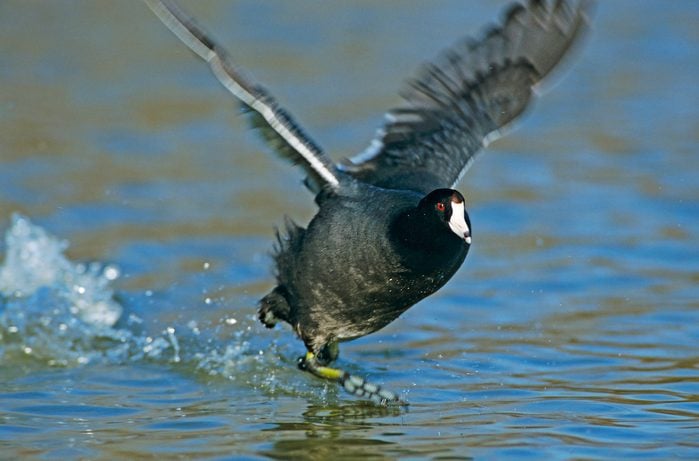
American Coot
American coots are related to the rails. If you get a good look at these black water birds, notice the white, chicken-like bill and frontal shield. They also have partially lobed toes, not webbed feet like ducks.
Coots are often seen swimming together in large numbers. I’ve affectionately dubbed their unique swimming and head bobbing as the “coot scoot.” Hesitant to take flight, coots will often flap frantically as they scurry along the water’s surface.
Check out 20 types of ducks you should know.
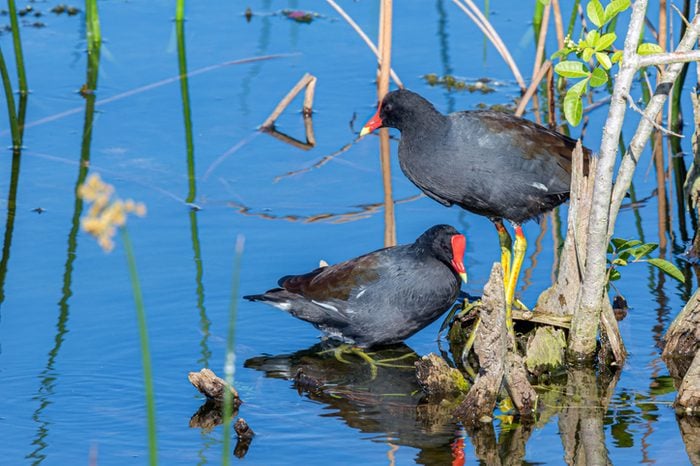
Common Gallinule
A close relative of the coots, the common gallinule (formerly common moorhen) is especially prevalent in the southern coastal states in the U.S. Look for the noticeable red bill and frontal shield on adult common gallinules.
Gallinules can resemble ducks when they are swimming, but they also have an impressive habit of walking on water (or rather, walking on floating vegetation). Gallinules have huge feet with remarkably long toes. The young chicks even have specialized spurs or hooks on their wings to help them grab and climb along their nests.
Similar to the common gallinule, look for the purple gallinule in the southeast with rich purples, blues, greens, yellows and reds.
Learn how to identify a wood duck and a northern shoveler.
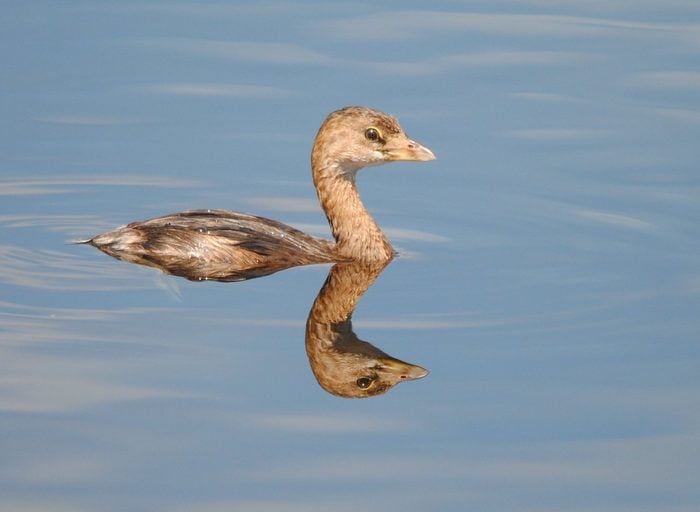
Pied-Billed Grebe
Pied-billed grebes make some interesting noises including wailing whoops and kuhs, but you’ll never hear one quack. Pied-billed are the most widespread of the North American grebes. Grebes have lobed toed and are most comfortable in the water. Their legs are back on the body, making walking a difficult task.
Instead of taking flight, grebes will often dive when they feel threatened. Some species, including the pied-billed, can also adjust their buoyancy and will sink down like a submarine, swimming along with just their heads sticking up like a periscope.
Meet the mallard: the most common duck in the world.
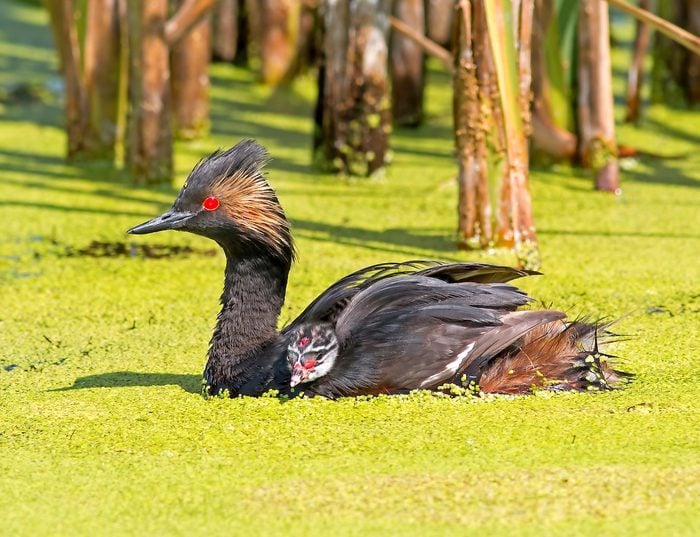
Eared Grebe
During the breeding season, eared grebes sport yellow tufts of feathers along the sides of the head. In nonbreeding plumage, these birds are slate gray with accents of black and white, resembling both horned and pied-billed grebes. Like other grebes, the eared grebe chicks will ride atop the backs of their parents. They can even remain in place as the adults dive underwater.
Adults will eat feathers and feed them to their young. This is to filter fish bones and crustacean bits in the stomach. When staging for migration, eared grebes will congregate in large numbers at Utah’s Great Salt Lake and California’s Mono Lake.
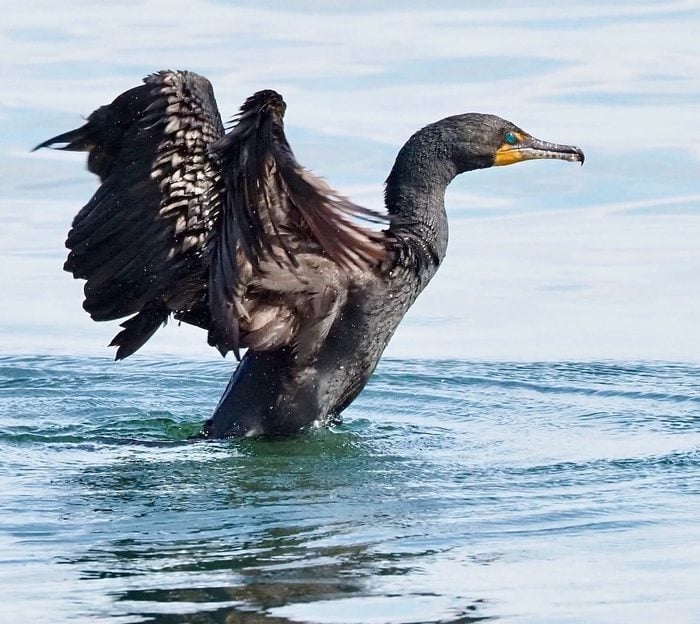
Double-Crested Cormorant
Like the mergansers they resemble, double-crested cormorants are fish eaters. But unlike mergansers, cormorants aren’t ducks. You might see them swimming low in the water, but you are just as likely to spot one perched basking in the sun with its wings spread wide. They don’t have nearly as much preening oil as ducks, so the cormorants air-dry their feathers out.
Once you learn the distinctive long-tailed and longnecked shape of the cormorant, they’re easy to pick out, even in flight. Their namesake double-crests are only visible during the breeding season, and even then, they can be subtle and hard to see.
Dive into fascinating facts about anhinga birds.
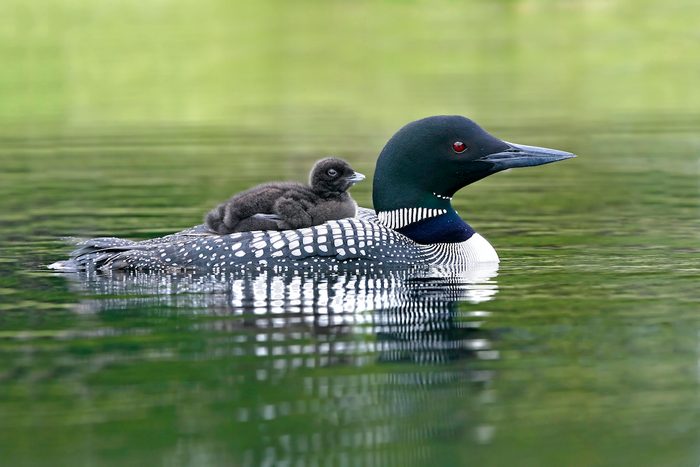
Common Loon
The common loon has a haunting, almost yodel-like sound, which echoes across the northern lakes it frequents in the summer. Males and females have the same beautiful summer colors, which includes a dark red eye, jet-black head and bold, black-and-white pattern across the back and chest. Loons definitely have a duck-like shape, though their bills are long and sharp, perfect for diving down to find fish.
While most think of loons as summer water birds, you can often spot them in the winter (though their plumage has faded) all over the coasts of North America. If you’re looking for common loons along the coasts in winter, keep an eye out for the red-throated and Pacific species, too.
Duck identification challenge: canvasback vs. redhead.
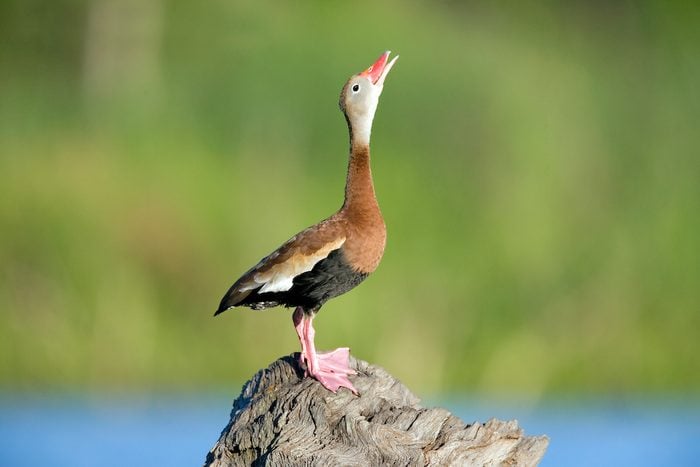
Whistling-Duck
How can this not be a duck? It even has duck in the name. Both the black-bellied and the fulvous whistling-ducks are more closely related to swans and geese than to true ducks. Look for these water birds in the southern states, especially Arizona, Texas and Florida, although they can wander farther to the north.
Male and female whistling-ducks look the same, and both help raise the whistling-ducklings. Fulvous whistling-ducks will nest on the ground, while black-bellied will use nest boxes place near or over water. They can be quite conspicuous within their fairly limited ranges.
Next, discover romantic and fascinating swan facts.
